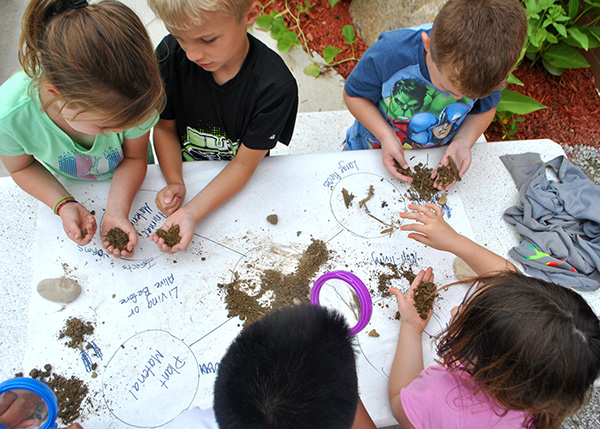“Show me your hands! Wow, they look too clean! Let’s get them dirty!” School is way more fun when the students get to dig in! I am a regular volunteer at our school garden and the students love to see me in the hallway because they know they are going to get dirty while they learn.

With almost every garden lesson we talk about the importance of fertile soil. To make it relevant to the students, I often compare their needs to the needs of plants. Humans and plants both have nutritional needs. Whether you in the garden, the kitchen, or at school, you too can teach the importance of human and plant nutrition.
Here are ten ways soil nutrients are similar to human nutrients.
- Nutrients for plants mainly come from the soil.
- Nutrients for humans primarily come from food, often food grown in the soil.
- Potassium helps human control muscles and the rhythm of the heart. In plants, potassium helps plants control and use water efficiently.
- In the context of plant requirements, carbon, oxygen, and hydrogen are called the non-mineral nutrients. People need these too.
- The full list of essential nutrients both humans and plants need includes manganese, magnesium, molybdenum, iron, copper, carbon, nitrogen, oxygen, hydrogen, phosphorus, sulfur, and chlorine.
- Nutrition labels & fertilizer bag labels give a clear breakdown of the nutrients provided. If only I didn’t have to worry about pesky calories like a pea plant!
- All of the essential nutrients plants and humans need can be found on the periodic table of elements.
- Iron in humans helps move oxygen. Iron helps the body make hemoglobin that moves oxygen and hemoglobin through the blood. This is similar to phosphorus moving energy around the plant.
- Calcium equals strong bones for humans. Whereas in plants, nitrogen helps grow strong stalks.
- Phosphorus helps plants with photosynthesis. It stores and moves energy around the plant. In humans, about 85% of phosphorus in the body can be found in bones and teeth. It also helps the body use and store energy.
We have free periodic table posters to help teach this lesson. To order, visit the website: local.nutrientsforlife.org
Learning is fun when you get to apply it to healthy minds and with dirty hands!





